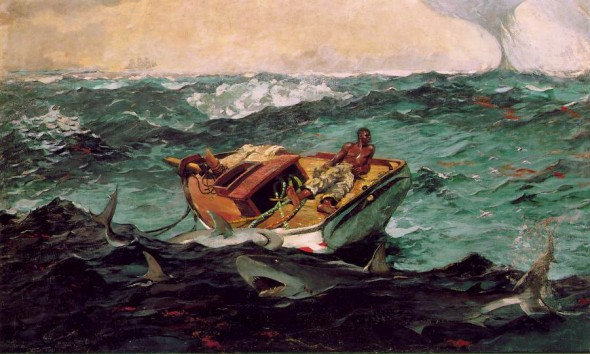 The Gulf Stream by Winslow Homer (1899)
The Gulf Stream by Winslow Homer (1899)
From Nat Geo (by Patrick Kiger, HT to Abel V):
Audiences cringed in terror as they watched the 1975 movie thriller Jaws, which depicted shark hunters’ desperate struggle to survive an encounter with a monstrous aquatic serial killer that was powerful enough to turn their fishing cruiser into splinters, and was relentless in its frenzied lust for human flesh.
But while Jaws was an escapist fantasy rather than an accurate depiction of sharks, the public didn’t grasp that distinction. In July 1975, a month after the film’s release, the New York Times reported that authorities up and down the East Coast were inundated with reports of shark sightings—most of them probably erroneous—by anxious beachgoers and recreational fishermen. The hysteria provided still more fuel for the widespread stereotype that sharks are evil, vicious, and menaces to humanity that must be feared, if not eradicated.
With the release of Jaws in 1975, and the sequels that followed, pushed the fear of sharks to new and outlandish extremes. Interestingly, Peter Benchley, who wrote both the novel that inspired the film and co-authored the screenplay, eventually came to regret his role in creating the image of sharks as killing machines, and immersed himself in efforts to educate the public about sharks and the need to protect them from extinction, according to his 2006 Los Angeles Times obituary. “Knowing what I know now, I could never write that book today,” he explained in a British newspaper interview. “Sharks don’t target human beings, and they certainly don’t hold grudges.”
Read it all here
Leave a Reply